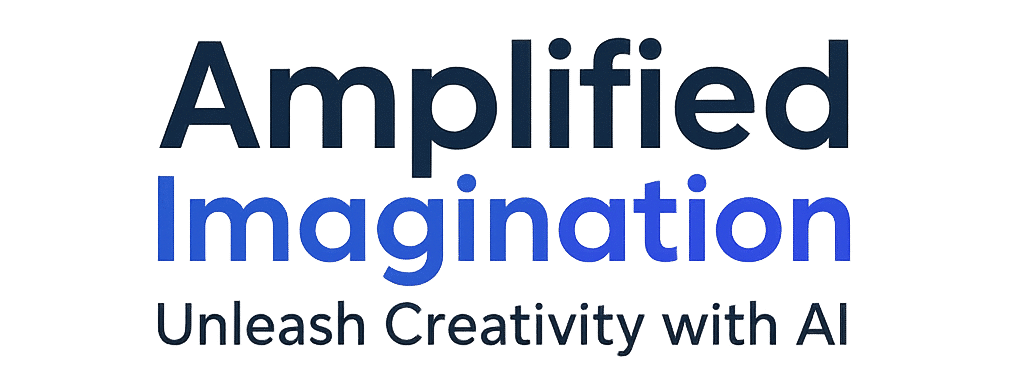The World Economic Forum’s 2025 Future of Jobs Report just identified a $178 billion global skills gap.
Companies are desperate to fill positions. Workers are scrambling to stay relevant.
And here’s what’s fascinating:
The top skills needed aren’t technical.
They’re creative thinking (#2), analytical thinking (#1), and curiosity (top 10).
Companies aren’t looking for better prompt engineers.
They’re desperate for people who can think originally while leveraging AI.
The Paradox Nobody Expected
AI was supposed to solve the productivity problem.
Instead, it created a creativity crisis.
Here’s what the data actually shows:
PwC’s 2025 CEO Survey: 77% of chief executives worry their companies lack creativity and innovation skills, up from 65% in 2023.
Deloitte’s Global Human Capital Trends 2025: “Imagination at work” and “human sustainability” rank as the top two organizational priorities. Not efficiency. Not automation. Imagination.
LinkedIn’s Skills Report 2025: The fastest-growing job requirements aren’t AI tools like ChatGPT or Midjourney. They’re judgment, synthesis, and original thinking.
McKinsey’s latest research: While companies report 40% productivity gains from AI adoption, 68% say they’re struggling to translate those gains into competitive advantage.
See the problem?
Everyone has the same AI tools. Everyone’s getting the same productivity boost. Nobody’s creating differentiated value.
What “AI Literacy” Actually Means
Most AI training focuses on the wrong thing.
“Here’s how to write better prompts.” “Here’s how to use ChatGPT for marketing.” “Here’s how to automate your workflow.”
That’s not literacy. That’s training workers to feed the commoditization machine.
Real AI literacy, the kind companies will pay premium salaries for, looks completely different.
It’s the ability to:
Use AI without surrendering judgment. Knowing when to follow AI’s suggestions and when to recognize it’s giving you probable when you need possible.
Generate original starting points. AI amplifies what you give it. If you start generic, you end generic. The real skill is sparking ideas AI would never generate.
Curate ruthlessly. AI produces volume. The differentiating skill is taste, knowing what deserves development and what should be discarded.
Maintain strategic context. Understanding what problem you’re actually solving, not just what task you’re completing.
These aren’t technical skills. They’re thinking skills.
And that’s exactly what the reports say companies need.
The Corporate Perspective
I’ve been talking to executives and creative directors about this gap. Here’s what they’re experiencing:
“Everyone on my team can use AI now. Nobody knows what to make with it.” , VP of Marketing, Fortune 500 tech company
“We’re drowning in AI-generated options and starving for original direction.” , Chief Creative Officer, global agency
“The productivity gains are real, but we’re not seeing innovation gains. We’re just doing mediocre work faster.” , Head of Product, startup
“I can teach someone to use AI tools in a week. I can’t teach them to think critically about what’s worth building in the first place.” , CEO, design consultancy
The pattern is consistent: Tools aren’t the problem. Thinking is.
Why Traditional AI Training Fails
Most corporate AI training follows a predictable path:
- Here are the tools
- Here are the features
- Here are some prompts
- Go use them
Then organizations wonder why their AI-assisted output looks identical to competitors’.
The problem: They’re teaching tool operation when they should be teaching creative direction.
It’s like teaching someone to use Photoshop without teaching them design principles. They can execute the functions, but they can’t create anything meaningful.
The Skills Companies Will Pay For
Based on the WEF report and conversations with hiring managers, here’s what actually commands premium salaries:
1. Curiosity-Driven Exploration
Not “ask AI for answers.” The ability to use AI to explore questions that don’t have answers yet. To follow tangents that seem impractical but reveal unexpected insights.
Why it matters: This is how you find opportunities competitors miss. AI can search efficiently. Curious humans discover accidentally.
Market value: Senior strategists with documented “discovery skills” command 30-40% salary premiums over tactical executors.
2. Critical Synthesis
Not “let AI summarize.” The ability to recognize patterns across disparate sources, distinguish signal from noise, and connect insights in ways that reveal new possibilities.
Why it matters: Anyone can get AI to compile information. Few can transform information into strategic insight.
Market value: Roles requiring “sense-making” and “strategic synthesis” grew 156% year-over-year (LinkedIn data).
3. Authentic Judgment
Not “accept AI’s first output.” The capacity to evaluate AI suggestions against real-world constraints, organizational context, and strategic goals that no algorithm understands.
Why it matters: AI optimizes for probable. Markets reward possible. Judgment is what bridges that gap.
Market value: “Strategic decision-making” appears in 73% of C-suite job descriptions, up from 41% three years ago.
4. Original Ideation
Not “brainstorm with AI.” The ability to generate genuinely novel starting points that give AI something worth amplifying, ideas shaped by lived experience, unexpected connections, and human intuition.
Why it matters: AI trained on existing patterns can’t originate what doesn’t exist yet. Original human thinking is the only input that creates differentiated output.
Market value: Creative roles emphasizing “original concept development” saw 89% faster hiring and 25% higher starting salaries.
The Economic Reality
Here’s why the skills gap represents opportunity, not threat:
Supply/demand imbalance: Millions can use AI tools. Thousands can think originally while using them. Premium goes to scarcity.
Competitive moats: When everyone has the same tools, differentiation comes from how you think, not what you use.
Value migration: As AI commoditizes execution, value flows to direction-setting and judgment.
Training gap: Companies know they need these skills but don’t know how to develop them. Early movers capture advantage.
The $178B gap isn’t just a problem. It’s a market signal about where value is flowing.
The Two-Track Career Path
Workers are diverging into two categories:
Track 1: The Executors
What they do: Use AI to complete tasks faster
How they’re positioned: “AI-proficient” on skills section
What they compete on: Speed and price
Career trajectory: Steady commoditization as AI capabilities improve
Salary trend: Flat to declining in real terms
Track 2: The Orchestrators
What they do: Use AI to explore possibilities, develop strategies, create original direction
How they’re positioned: “Strategic thinker with AI capabilities”
What they compete on: Insight quality and original thinking
Career trajectory: Increasing value as organizations realize execution isn’t enough
Salary trend: Premium and growing
Both use AI. Only one commands premium value.
What This Means for Your Next Career Move
Whether you’re job searching, negotiating a raise, or positioning for promotion, here’s what matters:
Don’t list AI tools on your resume. Everyone has those. List outcomes that demonstrate original thinking: “Identified market opportunity competitors missed” beats “Proficient in ChatGPT.”
Emphasize judgment. “Evaluated 47 AI-generated options and selected the 3 with strategic potential” shows you can curate, not just generate.
Document your thinking process. “Developed framework for determining when to use AI versus human insight” proves you understand the strategic question.
Show creative range. “Explored 5 unexpected approaches to traditional problem” signals you can wonder, not just execute.
The $178B skills gap? It’s hiring managers trying to articulate what you’re demonstrating.
The Training That Actually Matters
Organizations are realizing something critical:
You can’t train imagination through tool tutorials.
You can teach someone to use Midjourney in an afternoon.
You can’t teach them to imagine what’s worth creating in the first place.
The valuable training isn’t “how to use AI.”
It’s “how to think in ways that make AI useful.”
That’s a fundamentally different curriculum:
- Rebuilding curiosity that efficiency culture trained out
- Developing judgment that distinguishes probable from possible
- Practicing synthesis that creates insight from information
- Engineering serendipity that surfaces unexpected connections
These skills take practice, not tutorials. Development, not information.
And organizations are willing to pay for people who have them.
The Unfair Advantage
Here’s what the skills gap data reveals:
Companies already have AI capabilities.
What they lack is humans who can direct those capabilities toward original outcomes.
That’s your opportunity.
While others compete on “I can use AI tools,” you compete on “I can think originally and use AI to amplify it.”
While others race to execute faster, you create direction worth executing.
While others optimize for probable, you discover possible.
The irony? AI itself is proving that human creativity isn’t a soft skill.
It’s the hard economic constraint preventing organizations from translating productivity into competitive advantage.
The Choice
The $178B skills gap will persist until workers develop the capacities that complement AI rather than compete with it.
You can position yourself as another AI-proficient executor in an increasingly crowded market.
Or you can develop the thinking skills that make AI tools valuable in the first place.
One path leads to salary pressure.
The other leads to premium positioning that compounds over time.
The World Economic Forum, Deloitte, PwC, and LinkedIn all agree: Companies aren’t looking for people who can use AI.
They’re desperate for people who can think, and then use AI to amplify that thinking.
That’s not just a skills gap.
That’s a market opportunity.
Want to develop the skills organizations will pay premium for? Amplified Imagination teaches you to maintain original thinking while using AI as your amplifier, the exact combination the data shows companies need. [Learn more →]




